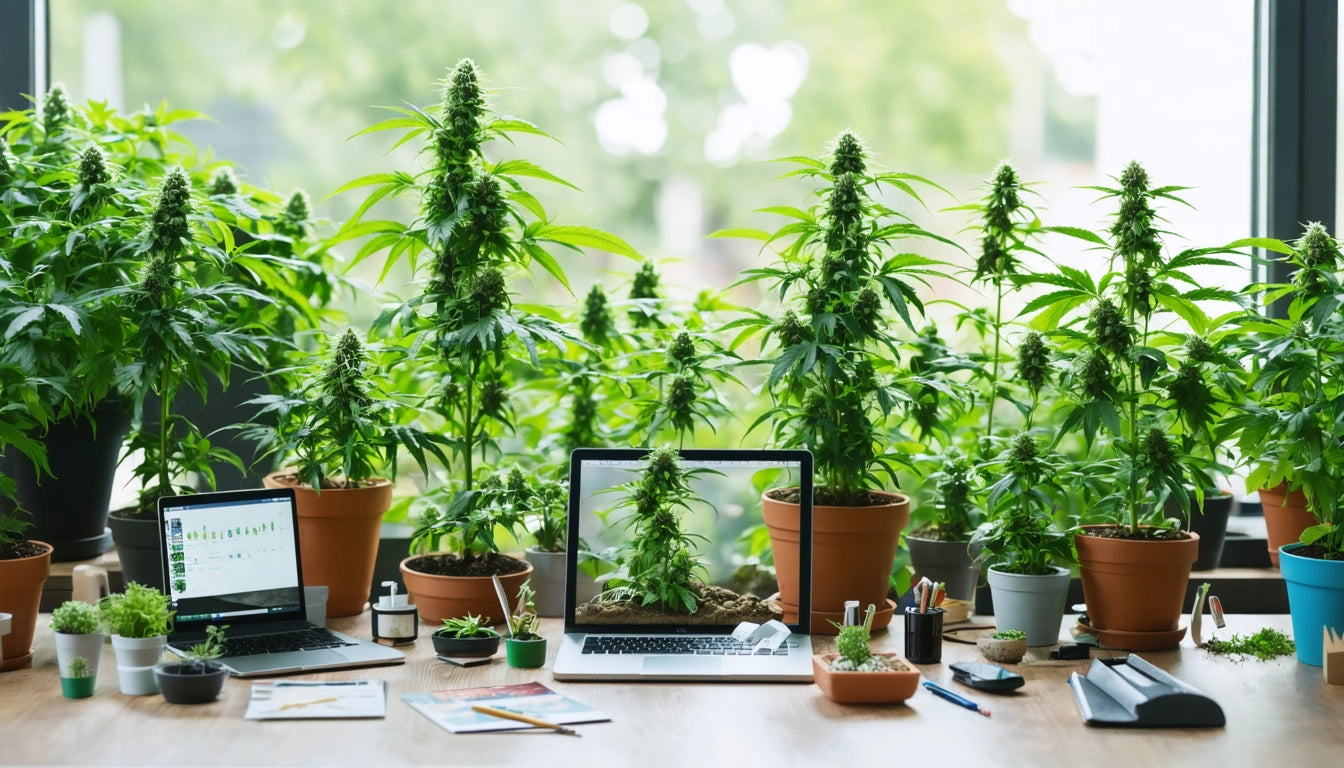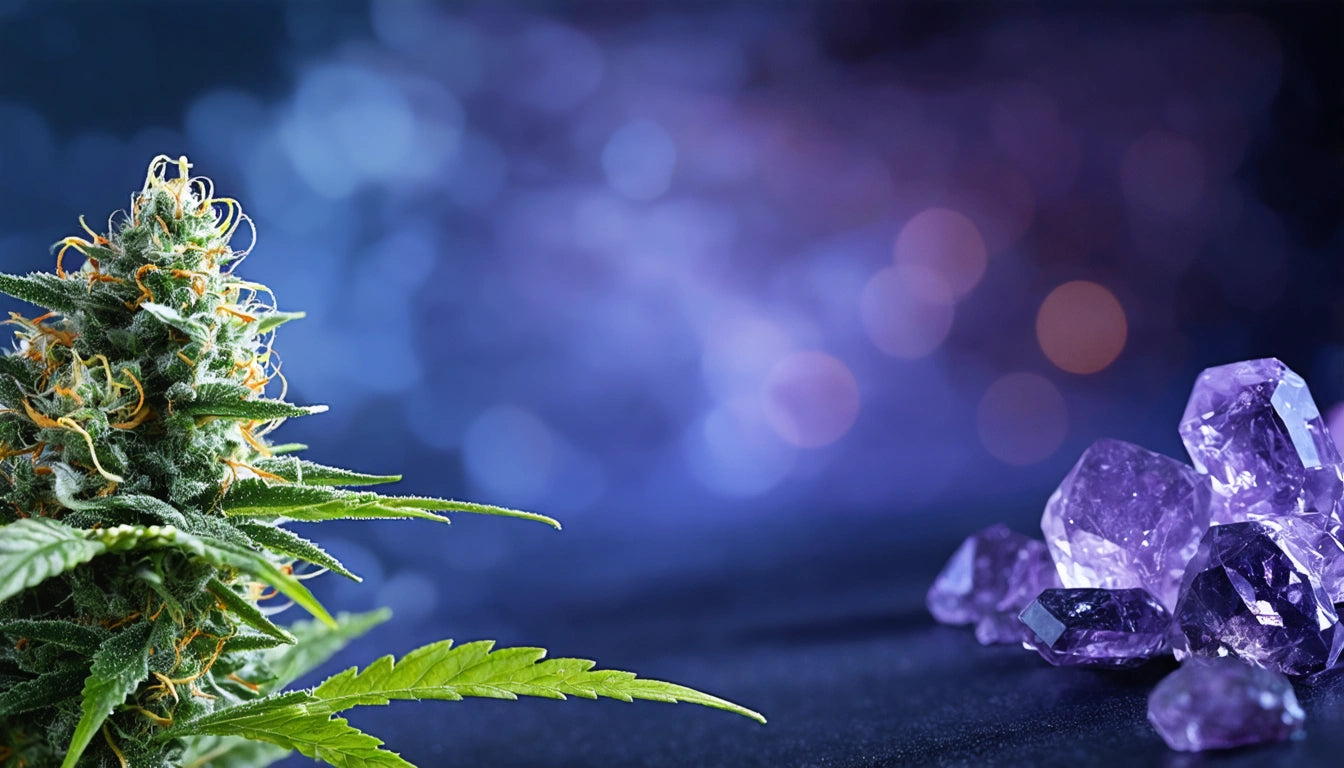Table of Contents
- Essential Nutrients for Cannabis Plants
- Best Nutrients for Outdoor Cannabis Growing
- Nutrient Solutions for Hydroponic Systems
- Creating an Effective Feeding Schedule
- Identifying and Fixing Common Nutrient Deficiencies
- Organic vs. Synthetic Nutrients: Pros and Cons
- Advanced Nutrient Strategies for Experienced Growers
Top Nutrients and Feeding Tips for Optimizing Cannabis Plant Growth
Providing the right nutrients at the right time is crucial for developing healthy cannabis plants with optimal yields. Whether you're growing outdoors in soil, using hydroponic systems, or cultivating in containers, understanding what nutrients pot plants need throughout their lifecycle can make the difference between mediocre and exceptional results.
Essential Nutrients for Cannabis Plants
Cannabis plants require three primary macronutrients: nitrogen (N), phosphorus (P), and potassium (K). These form the foundation of any feeding regimen and are typically displayed as NPK ratios on fertilizer packaging.
Macronutrients
During the vegetative stage, cannabis plants need higher nitrogen levels to develop strong stems and lush foliage. As flowering begins, phosphorus and potassium requirements increase to support bud development. This comprehensive nutrient guide explains how these requirements shift throughout the growing cycle.
Secondary Nutrients and Micronutrients
Beyond NPK, cannabis plants also need calcium, magnesium, and sulfur in moderate amounts, plus trace elements like iron, manganese, boron, molybdenum, zinc, and copper. These micronutrients, while needed in smaller quantities, are essential for enzyme function and overall plant health.
Best Nutrients for Outdoor Cannabis Growing
Outdoor growing presents unique opportunities and challenges for nutrient management. Natural soil often contains beneficial microorganisms but may lack specific nutrients cannabis plants crave.
Soil Amendments
Before planting outdoors, many growers amend their soil with:
- Compost to improve soil structure and provide slow-release nutrients
- Worm castings for beneficial microbes and balanced nutrition
- Bat guano for phosphorus-rich natural feeding
- Bone meal to support root development
According to experts in organic cannabis cultivation, these amendments create a living soil that continues to nourish plants throughout the season.
Nutrient Solutions for Hydroponic Systems
Hydroponic systems require specially formulated nutrient solutions since plants don't have soil to draw from. When selecting the best nutrients for deep water culture or other soilless setups, look for complete formulations designed specifically for cannabis.
pH and EC Monitoring
In hydroponic systems, maintaining proper pH (typically 5.5-6.5) and electrical conductivity (EC) is critical for nutrient availability. Too high or low pH can lock out certain nutrients, while improper EC can lead to nutrient burn or deficiencies.
When storing nutrient solutions and supplements, proper containers are essential. Many growers use containers with secure, child-resistant lids to prevent accidental exposure and maintain solution freshness.
Creating an Effective Feeding Schedule
What should you feed pot plants and when? Creating a feeding schedule tailored to your plants' growth stage is essential for optimal results.
Vegetative Stage
During vegetation, use formulations with higher nitrogen content (like an 8-4-4 ratio). Feed every 2-3 waterings, allowing for plain water in between to prevent salt buildup.
Flowering Stage
As plants transition to flowering, switch to bloom-specific nutrients with higher phosphorus and potassium levels. This guide to boosting bud growth provides detailed recommendations for the flowering phase.
Flushing Period
Most growers implement a flushing period of 1-2 weeks before harvest, using only plain water to remove excess nutrient salts from the growing medium. This improves the final product's flavor and smoking quality.
Identifying and Fixing Common Nutrient Deficiencies
Even with the best pot nutrients, deficiencies can occur. Learning to recognize the signs can help you correct issues before they impact your harvest.
- Nitrogen deficiency: Yellowing of older leaves, starting from the bottom
- Phosphorus deficiency: Dark green leaves with purple stems
- Potassium deficiency: Brown spots and yellowing leaf edges
- Calcium deficiency: New leaves appear twisted or stunted
- Magnesium deficiency: Interveinal chlorosis (yellowing between leaf veins)
When you spot these symptoms, adjust your feeding regimen accordingly. These care tips can help you diagnose and treat common nutrient issues.
Organic vs. Synthetic Nutrients: Pros and Cons
The debate between organic and synthetic nutrients continues among cannabis growers. Each approach has distinct advantages.
Organic Nutrients
Organic nutrients are derived from natural sources like compost, manure, and plant materials. They typically:
- Release nutrients slowly as microorganisms break them down
- Improve soil health and structure over time
- Produce complex terpene profiles and flavors
- Have a higher margin of error (less likely to burn plants)
Synthetic Nutrients
Synthetic nutrients are manufactured chemical compounds that:
- Provide precise control over nutrient ratios
- Are immediately available to plants
- Often produce higher yields in shorter timeframes
- Require more careful monitoring to prevent toxicity
This fertilizer guide explores both options in detail to help you make an informed choice for your growing style.
Advanced Nutrient Strategies for Experienced Growers
As you gain experience, you can implement more sophisticated feeding techniques to maximize yield and quality. These approaches require careful monitoring but can produce exceptional results.
Beneficial Microorganisms
Incorporating mycorrhizal fungi and beneficial bacteria enhances nutrient uptake and plant resilience. These microorganisms form symbiotic relationships with cannabis roots, effectively extending their reach and protecting against pathogens.
Foliar Feeding
Spraying diluted nutrients directly onto leaves can provide a quick boost during critical growth periods. This technique allows for rapid nutrient absorption through the stomata but should be used sparingly and never during flowering.
Whether you're a beginner or experienced grower, understanding what nutrients pot plants need at each stage of development will help you achieve healthier plants and more abundant harvests. By combining quality nutrients with proper application techniques, you'll be well on your way to cultivating premium cannabis.











Leave a comment
All comments are moderated before being published.
This site is protected by hCaptcha and the hCaptcha Privacy Policy and Terms of Service apply.